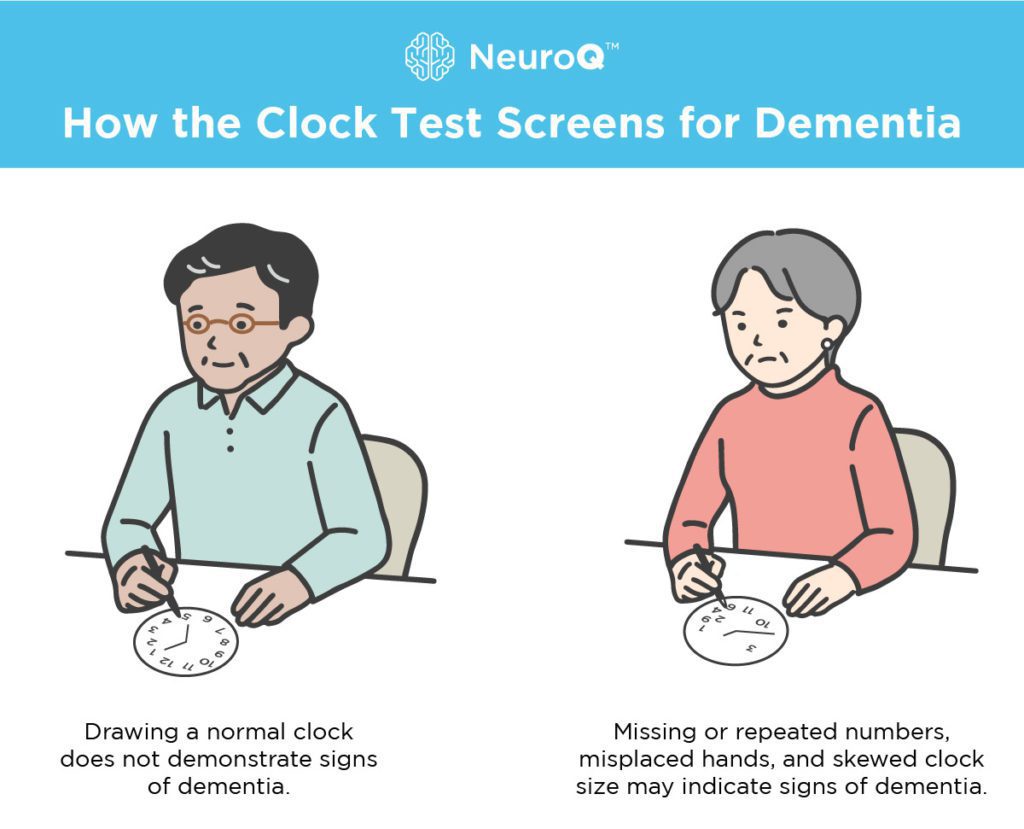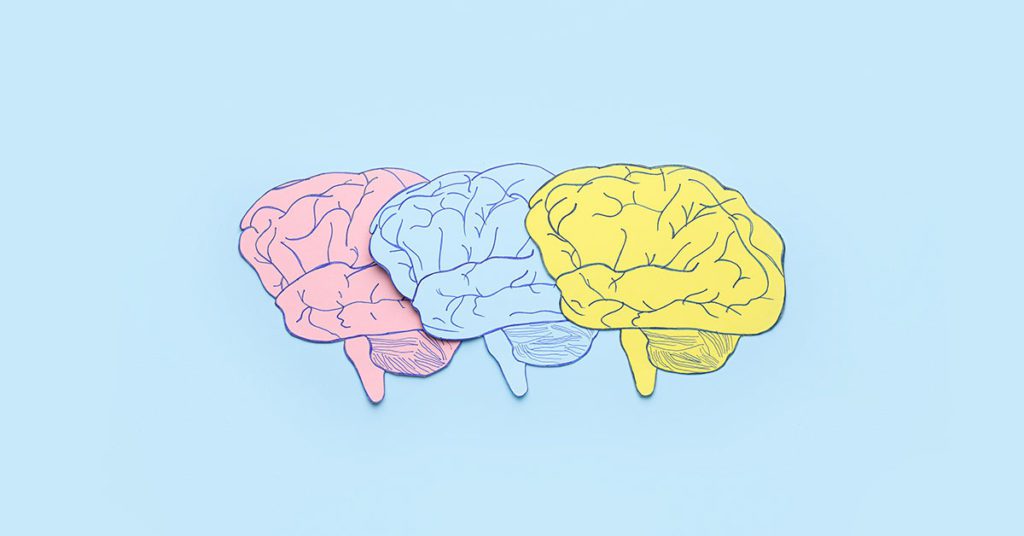The dementia clock test assesses signs of mental decline using just a pencil and piece of paper. Patients draw a clock with numbers and clock hands pointing to a specific time. Because dementia impacts many areas of cognition, people in its early stages often have trouble when asked to draw a clock. This article will explain the clock test for dementia and how it can provide valuable clues to detect cognitive conditions.
How Does the Dementia Clock Test Work?
Taking a clock test for dementia can help detect early signs of cognitive decline.
- A doctor or qualified professional gives a patient a piece of paper with a drawn circle.
- The doctor asks the patient to draw the numbers of a clock.
- The patient is asked to draw the clock hands to display a certain time.

Medical professionals may use different versions of the dementia clock test for diagnosis. In one version, the patient must draw a clock showing the time 10 minutes after 11. Doctors won’t say the word “hands” to avoid giving any clues, and the patient will usually repeat this task three times.
Doctors use as many as 15 different methods for clock test dementia scoring. A doctor may use a scoring system of up to 10, 15, or 20 points based on the patient’s ability to draw the number sequence, number placement, and hand placement. They will adjust points for missing numbers, misplaced hands, repeated numbers, or incorrect time.
Certain errors in the dementia clock test can help diagnose a specific condition. For example, people with Huntington’s disease tend to draw a small clock because of issues with the basal ganglia. Alternatively, people with Alzheimer’s disease may draw a large clock or crooked circles and numbers.
What Does the Dementia Clock Test Indicate?
Dementia can interrupt a person’s normal life and activities. It affects aspects of cognition including memory, thinking, and social abilities. Signs of dementia may include:
- A decline in executive function which impacts memory and self-control
- Trouble with visual-spatial processing, the brain’s ability to perceive objects in space
- Difficulty paying attention Issues with motor programming and understanding sequence
Drawing a clock requires all of these skills. If a person struggles with any of these tasks, it may indicate early symptoms of Alzheimer’s or other types of dementia. The dementia clock test may also help diagnose neurological conditions such as Huntington’s disease, hydrocephalus, hepatic encephalitis, delirium, or a vitamin B-12 deficiency. It can also help evaluate damage after brain injury.
Although the dementia clock test can help screen for cognitive decline, it cannot diagnose the type of dementia. Still, this simple low-cost test gives doctors the ability to discover neurological conditions early on.
Dementia Behaviors and Signs
Dementia occurs due to the loss of nerve cells and connections in the brain. Damage to the brain results in behavioral and psychological symptoms of dementia (BPSD) and can vary from person to person.
Common signs of dementia may include:
- Memory loss
- Confusion and disorientation
- Forgetting faces and names
- Difficulty communicating or remembering words
- A decline in visual and spatial perception
- Difficulty managing day-to-day tasks
- Psychological symptoms, such as depression, anxiety, agitation, or paranoia
Dementia Diagnosis and Treatment
If you or a loved one exhibits dementia behaviors, a doctor can use scans to look for changes in brain structure and function. Blood tests may help in diagnosis. For example, people with Alzheimer’s may accumulate higher levels of the beta-amyloid protein.
Cognitive and neurological evaluations, like the dementia clock test, can help assess memory, verbal skills, and math skills, as well as balance and reflexes. Genetic tests can also demonstrate whether a person is at risk for dementia.
A dementia test at home, called The Self-Administered Gerocognitive Exam (SAGE), can check for memory and thinking problems early. The simple test takes just 15 minutes to complete using a pen and paper. After completing the test, take the results to a physician who can provide a qualified evaluation and recommend the appropriate steps.
Care for Dementia Patients
It can feel overwhelming if you or someone you know has been diagnosed with dementia. Fortunately, new research is showing ways to prevent and even reverse cognitive decline by following the appropriate protocol.
In his book, The End of Alzheimer’s, neurologist Dr. Dale Bredesen outlines metabolic factors that can lead to dementia and lifestyle changes to prevent it. Based on decades of working with patients, he developed the ReCODE protocol, a multi-pronged, holistic approach a multi-pronged, holistic approach to address the many causes of cognitive decline. If you suspect a loved one may be showing signs of dementia, following the recommended lifestyle changes may help.
Additional care tips for dementia patients:
- Have patience and understand the challenges of the condition
- Set up a safe environment to reduce risk of injury
- Develop strategies for how to talk to someone with dementia
- Establish a routine for daily tasks, such as bathing, dressing, and eating
- Create to-do lists to help remember appointments and events
- Join a memory care community for specialized dementia support with 24-hour supervision
- Use dementia clocks with large faces displaying the current date and time to help keep track of time
Each person will experience symptoms of dementia differently. Become educated on the various symptoms and ways lifestyle changes can prevent the progression of dementia. If you or someone you know experiences signs of mental decline, assessment tools such as the clock face dementia test can help doctors evaluate symptoms and recommend the next steps.
Related Reading:





